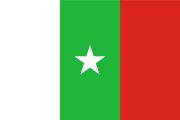
Casamance
Background Information
This selection is made for schools by a children's charity read more. SOS Children has looked after children in Africa for forty years. Can you help their work in Africa?
Casamance (Portuguese: Casamança) is the area of Senegal south of The Gambia including the Casamance River. It consists of Basse Casamance (Baixa Casamança Lower Casamance) ( Ziguinchor Region) and Haute Casamance (Alta Casamança Upper Casamance) ( Kolda and Sédhiou Regions). The largest city of Casamance is Ziguinchor.
History
The Casamance was subject to both French and Portuguese colonial efforts before a border was negotiated in 1888 between the French colony of Senegal and Portuguese Guinea (now Guinea-Bissau) to the south. Portugal lost possession of Casamance, then the commercial hub of its colony. Casamance, to this day, has preserved the local variant of Kriol known as Ziguinchor Creole, and the members of the deep-rooted Creole community carry Portuguese surnames like Da Silva, Carvalho and Fonseca. Interest in Portuguese colonial heritage has been revived in order to exalt a distinct identity, particularly of Baixa Casamança.
Separatist Movement
Though the Jola are the dominant ethnic group in the Casamance, they represent only 4% of the total population of Senegal. The Wolof dominate the nation as a whole. The Jola's sense of economic disenfranchisement within greater Senegal contributed to the founding of a separatist movement advocating the independence or autonomy of the Casamance, the Movement of Democratic Forces of Casamance (MFDC), in 1982.
The MFDC's armed wing was established in 1985, and since 1990, the Casamance Conflict, a low-level insurgency led by the MFDC against the Senegalese Government that has been characterized by sporadic violence and frequent but unstable ceasefire agreements. An illegal shipment of weapons hailing from Iran was seized in Lagos, Nigeria in October 2010, and the Senegalese government suspected the MFDC of having been the intended recipients of the weapons. Senegal recalled it's ambassador to Tehran over the incident.
Climate
The climate is low-lying and hot, with some hills to the southeast. The Region has average rainfall greater than the rest of Senegal.
Economy
The economy of the Casamance relies largely on rice cultivation and tourism. It also has excellent beaches along its coastline, particularly at Cap Skirring.


